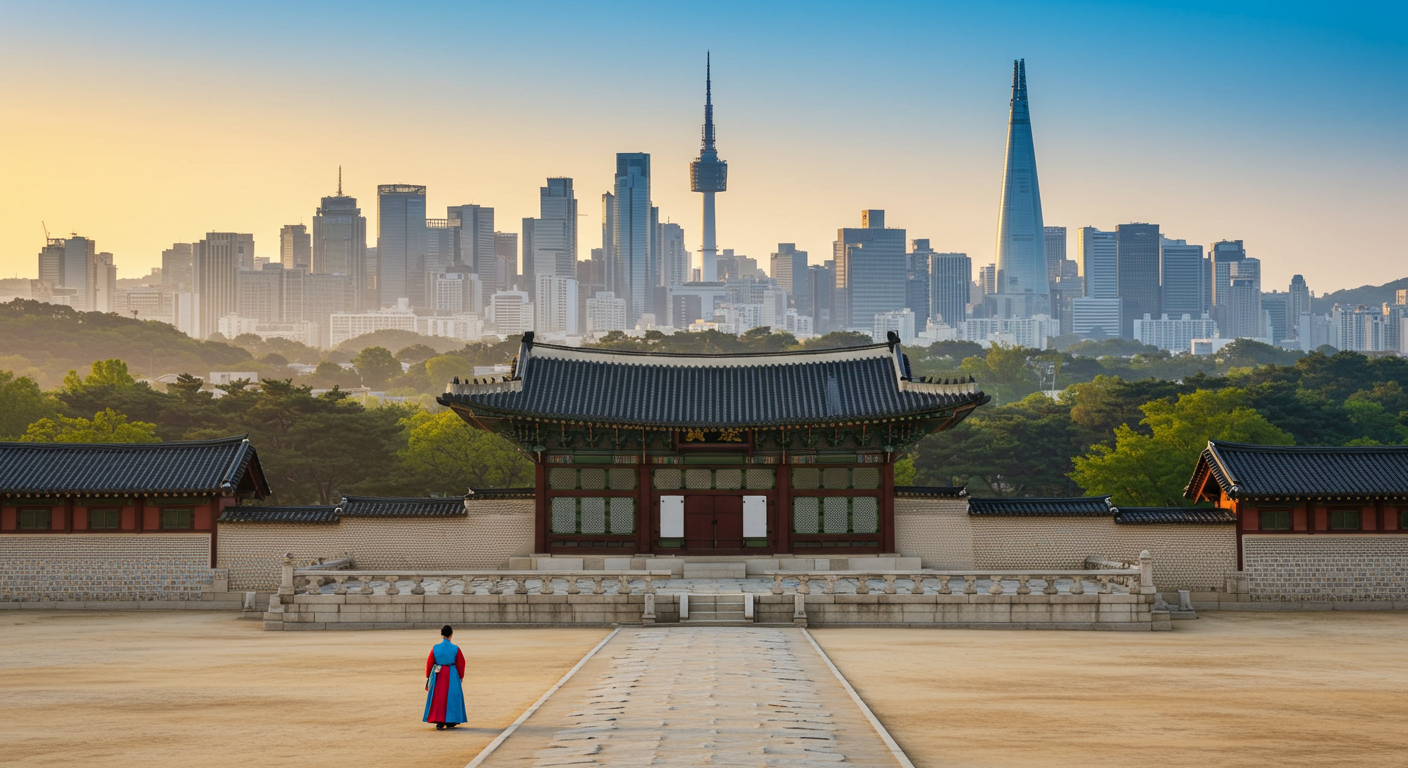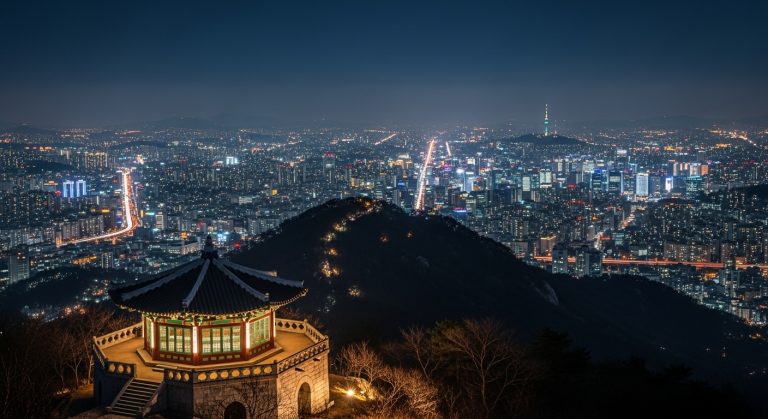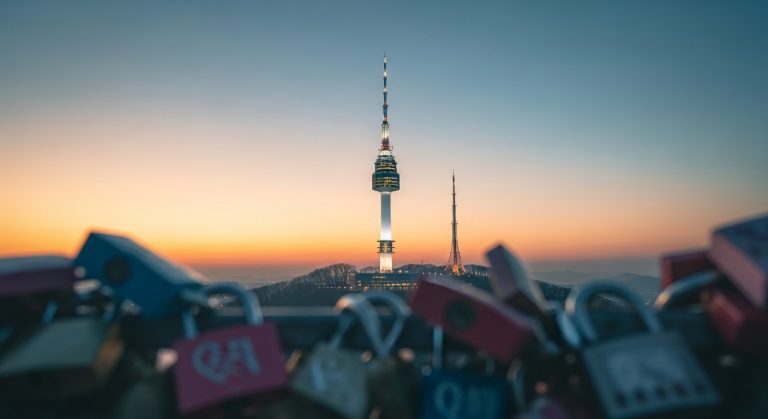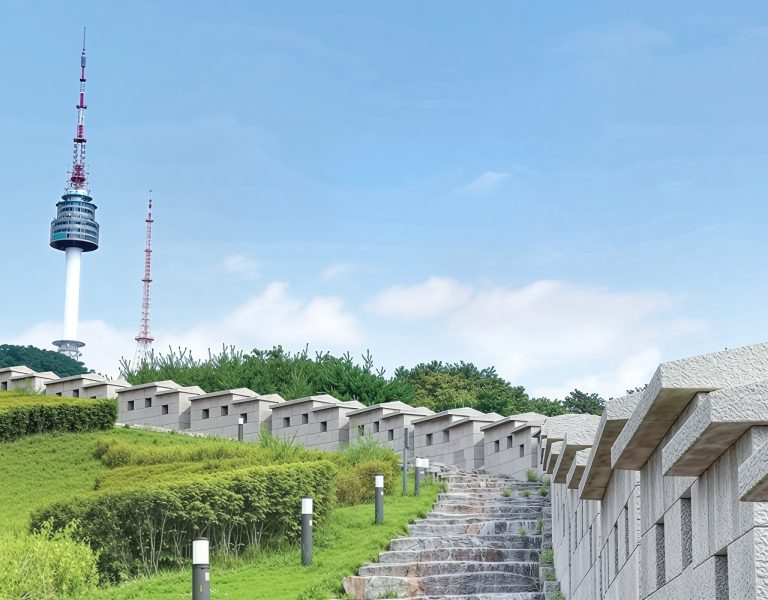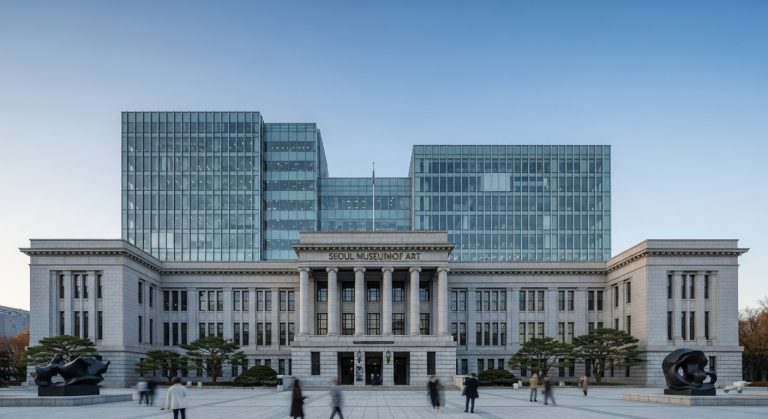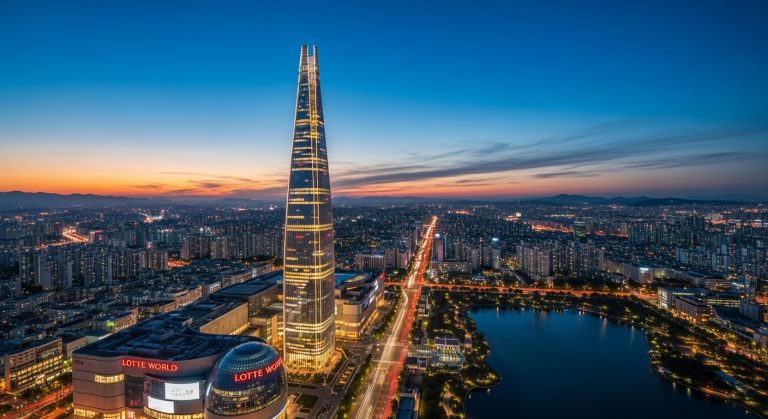Bukchon’s Silent Tourism: A Deep Dive into Respectful Travel and Finding the Eight Scenic Views

Explore the ancient architecture of hanok, master “Silent Tourism” etiquette, find the breathtaking Eight Scenic Views, and discover hidden cultural hubs. Plan your respectful and memorable journey to this authentic residential gem.
There’s a moment when you’re navigating the crowded, hyper-modern streets of Seoul—the capital of speed and innovation—that you realize you’re missing something deeper, something historic.
I’ve been there, staring up at the futuristic skyscrapers and feeling a pang of longing for the soul of old Korea.
Fortunately, that soul is perfectly preserved, nestled right in the city’s geographical and historical center: Bukchon Hanok Village.
This isn’t just a collection of old buildings; it’s a living, breathing testament to the Joseon Dynasty, where centuries-old traditions meet contemporary urban life.
My personal experience wandering these narrow, tiled-roof alleys was transformative, but it also taught me a critical lesson: to visit Bukchon is to be a guest in a residential community.
In this exhaustive guide, I want to equip you with the deep historical context, the insider tips on finding those stunning photo spots, and, most importantly, the vital etiquette of ‘Silent Tourism’ to ensure your impact on this precious area is entirely positive. Let’s embark on this tranquil journey together! 🇰🇷😊
Section 1: The Foundations of History and Architecture 🤔
The Significance of Bukchon: North Village Aristocracy
The very name Bukchon translates to “North Village,” a designation it earned because of its location north of the Cheonggyecheon Stream and the Jongno area.
This placement, nestled between the two great royal palaces—Gyeongbokgung to the west and Changdeokgung to the east—made it the exclusive residential quarter for the elite Yangban class (nobility and high-ranking officials) during the Joseon Dynasty.
When you walk here, you are literally traversing the most politically and socially significant residential area of old Seoul.
It’s a powerful feeling that grounds the entire visit in 600 years of capital history.
A traditional Hanok isn’t just aesthetically pleasing; it’s an architectural marvel focused on harmony with nature.
Look for two key features: the Ondol (underfloor heating system) for warmth, and the Daecheong (cool wooden floor hall) for ventilation during hot summers. This balance is known as Baesanimsu (mountain in the back, water in the front).
The 20th Century and Preservation Efforts
While some hanoks are ancient, many of the current structures date back to the late 19th and early 20th centuries.
In the early 1900s, attempts were made to modernize or demolish the area, but crucial preservation efforts, especially post-Korean Liberation, helped save this irreplaceable heritage.
It is largely thanks to the residents and the Seoul Metropolitan Government’s commitment to preservation that we can still stroll through this authentic neighborhood today.
This dedication is what makes Bukchon different from reconstructed villages; it is a living museum where real people lead their daily lives.
Section 2: Finding the Bukchon Eight Scenic Views 📸
For the traveler and photographer, the Eight Scenic Views (Bukchon 8 Gyeong) are the ultimate checklist.
These eight designated spots offer the most iconic, picturesque panoramas of the village and its surroundings. They are concentrated mainly in the steep, atmospheric alleys of Gahoe-dong.
Hunting for all eight views is a fantastic way to explore the area’s intricate network of streets, but let me give you a heads-up: it’s a workout!
The most famous views involve climbing steep paths to get that perfect shot of the tiled roofs rolling down toward the city.
The Most Beloved Views (Gahoe-dong 31 Area)
-
The Street of Stone Steps (Gahoe-dong 31): This is arguably the most famous spot, often featuring in postcards and dramas.
The stone steps themselves are unique, made from a single, carved slab of bedrock. The view looking down the slope with the hanoks lining both sides is simply magical. -
Panoramic Rooftop View: Find the spot where you can see the dense clusters of hanok roofs, beautifully juxtaposed against the background of Namsan Tower and the distant modern Seoul skyline.
I remember standing there and realizing how quickly Seoul transitioned from ancient royalty to a global metropolis in one frame. -
The Alley of Quiet Contemplation: One of the less-crowded “views” focuses purely on the intricate details of a single, well-preserved hanok wall and gate.
It’s a reminder that beauty isn’t just about the panoramic, but the subtle details of nature’s harmony in the architecture.
Case: Photography Scheduling ⏰
If you are serious about photography, aim for the hour right at 10:00 AM, the start of visiting hours.
The light is often softest, and you beat the majority of the crowds, especially in the densely populated Gahoe-dong 31 area.
Warning: Never use drones or bright flash photography near the houses; remember, these are people’s homes.
Section 3: Mandatory Protocol – Mastering ‘Silent Tourism’ 🤐
I cannot stress this enough: Bukchon Hanok Village is a prominent residential area where people live, sleep, and work daily.
The massive influx of tourists, sometimes up to 6.4 million visitors annually against just over 6,000 residents, created significant friction and noise pollution.
To mitigate this impact, the concept of ‘Silent Tourism’ was officially established.
Your compliance is not optional; it is a fundamental requirement for the privilege of visiting this historic site.
Due to designation as a Special Management Area (Red Zone), public access for tourists is strictly limited to between 10:00 AM and 5:00 PM (17:00).
Do not visit the restricted zones outside these hours. They are enforced to protect the residents’ quality of life.
The Silent Tourism Code: Do’s and Absolute Don’ts
| ✅ DO (Respectful Conduct) | ❌ DON’T (Prohibited Actions) |
|---|---|
| Maintain a whisper or absolute silence. | Use loud voices, yell, or engage in boisterous play. |
| Keep groups small (ideally 10 people or less). | Use megaphones, loudspeakers, or large filming equipment. |
| Take only exterior photos; stay outside of private gates. | Take photos or film inside houses, even if the door is ajar. |
| Dispose of trash in designated receptacles. | Litter anywhere in the village. |
I recall seeing a group being politely but firmly asked to quiet down by a local guide.
It’s a clear indication of how seriously these rules are taken, so let’s all be model visitors.
Section 4: Logistics, Cultural Exploration, and Dining 🗺️
Getting There: The Easiest Way
The most common and convenient way to reach Bukchon is via the Seoul Metropolitan Subway.
The village is easily accessible from the following station:
Subway: Anguk Station (Line 3), Exit 3.
From Exit 3, it’s about a 5-10 minute walk (approximately 516 meters) to the Bukchon Cultural Center area, which serves as the village’s main information hub.
Crucial Note: Parking is not available within the village area itself.
You must rely on public transport or nearby commercial parking lots, which can be expensive and crowded.
Beyond the Scenery: Public Hanoks and Experiences
The Bukchon area is home to several designated Public Hanoks that offer visitors a chance to learn, relax, and engage with traditional Korean culture without disturbing residents.
These are must-visits!
- Bukchon Cultural Center (북촌문화센터): Start here. It offers free maps, information on the history and architecture of hanoks, and occasionally hosts traditional craft programs.
- HANSIK Space E:eum (한식문화공간 이음): Dedicated to Korean food culture, often hosting cooking classes and exhibitions related to Hansik (traditional Korean cuisine).
- The Sool Gallery (전통주갤러리): A public space where you can learn about and sample various traditional Korean alcoholic beverages (Sool), such as Makgeolli and Soju.
Culinary Exploration: Hanok Meets Modern Taste
The Anguk/Bukchon area is also a thriving center for unique dining experiences, often blending modern aesthetics with traditional hanok settings.
Don’t miss the chance to grab a bite in a century-old house!
| Style | Spot | Why Go? |
|---|---|---|
| Traditional Korean | Keungiwajip (큰기와집) | Famous for traditional Korean dishes like Ganjang Gejang (marinated crab). |
| Casual Lunch/Snack | Bukchon Son Mandu (북촌손만두) | A popular spot for hand-made Korean dumplings (mandu). |
| Aesthetic Cafe | Onion Anguk (어니언 안국) | A coffee shop housed in a spectacular traditional hanok structure. |
Section 5: Essential Cultural Respect Checklist 📝
Bukchon is a place where residents’ daily lives are respected. Before your visit, you must internalize and practice the following core etiquette points.
4 Key Rules for Visitors
- 1. Strict Hours: Absolutely do not visit outside the permitted hours of 10:00 AM to 5:00 PM (17:00).
- 2. Absolute Silence: Do not talk loudly or use devices that generate noise. You must whisper or maintain silence.
- 3. Respect Privacy: Do not peer inside open Hanok gates or step onto residents’ private property.
- 4. Small Groups: Large tour groups must be divided into small units of 5 to 10 people before entering the main residential alleys.
Section 6: Final Summary and FAQs 🤔
RESIDENTIAL STATUS
Authentic, lived-in homes of former aristocracy (Yangban). Be a guest.
TIME RESTRICTION
10:00 to 17:00 (10 AM to 5 PM). Outside these hours is prohibited in red zones.
BEST VIEWS
Gahoe-dong 31 area for the famous Eight Scenic Views and rooftop panorama.
Frequently Asked Questions (FAQ)
Q: Is there an entrance fee to Bukchon Hanok Village?
👉 No, the village itself is a neighborhood and is free to enter. However, some public hanoks or workshops within the village may charge fees for programs or entry.
Q: Can I stay overnight in the village?
👉 Yes, there are many traditional hanok guesthouses (B&Bs) available for booking. Staying here is a wonderful, immersive experience, but you must still follow quiet hours when outside your accommodation.
Q: What is the nearest subway station?
👉 The easiest access point is Anguk Station (Line 3), Exit 3. It’s a short walk from there to the cultural center.
A Parting Thought: Carry the Silence With You 🎁
Your trip to Bukchon Hanok Village is more than just sightseeing; it’s an act of cultural engagement.
By arriving during the correct hours and embracing the ethos of Silent Tourism, you are contributing directly to the survival of this magnificent 600-year-old tradition.
As I always tell fellow travelers, take thousands of photos, but leave behind only footprints and silence.
I hope this detailed guide helps you have a peaceful, deeply enriching, and respectful experience in the heart of old Seoul. Happy exploring! ✈️🇰🇷
